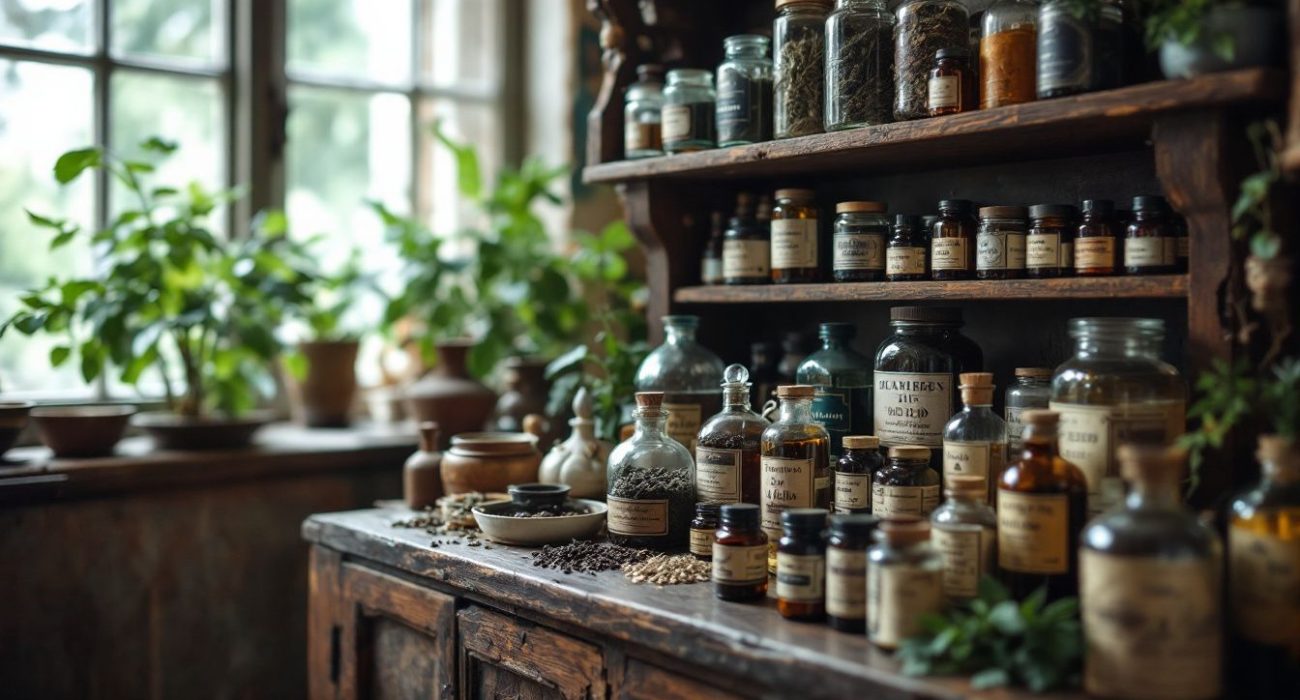Many people have trouble falling asleep. Since ancient times, alcohol and opiates were used to help with sleep. This post will share the story of how sleep aids have changed over time.
Keep reading to learn more.
Early History of Sleep Aids
In ancient times, people used natural remedies and herbal treatments to induce sleep. Opium and white poppy were widely used in ancient civilizations as sleep aids. Also, early cultures practiced various rituals to help with sleeping.
Ancient remedies and herbal treatments
Long ago, people used plants to help them sleep. They picked mandrake, henbane, and deadly nightshade for this purpose. These plants were early treatments to make sleeping easier.
In the 16th century, a syrup called diacodium was popular. It came from poppies. People used it often to find sleep.
Use of opium and white poppy in ancient civilizations
Ancient civilizations used opium and white poppy to help people sleep. They knew these plants could make you feel relaxed and sleepy. People in places like Egypt, Greece, and Rome used the milk from the poppy plant for this purpose.
They also made drinks and mixtures with it.
This use of opium showed how early humans looked for ways to solve sleep problems. After talking about opium, we can look at other rituals that helped people fall asleep long ago.
Sleep-inducing rituals in early cultures
Early cultures had special ways to help people sleep. They did not have sleeping pills like we do now. Instead, they used rituals and natural remedies. Some would drink teas made from calming herbs.
Others listened to certain sounds or chants that helped their minds relax for sleep.
These activities were part of their sleep hygiene. Sleep hygiene means things you do to help yourself get a good night’s rest. Back then, knowing how to relax and fall asleep naturally was very important.
Now let’s move on to learn about sleep aids in the Middle Ages.
Sleep Aids in the Middle Ages
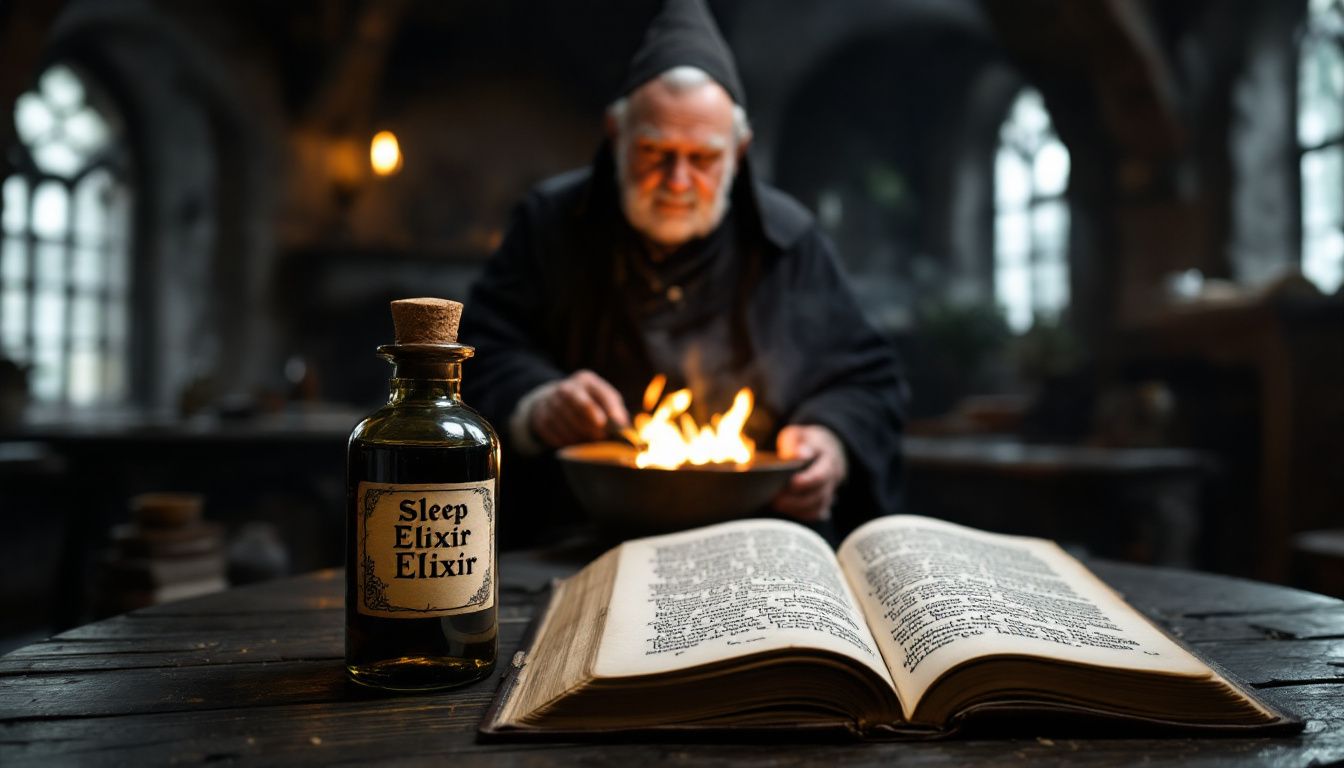
Sleep aids in the Middle Ages involved laudanum, an opium-based remedy. People used sleep remedies and concoctions in early modern England.
Laudanum and its preparation
Laudanum was a popular sleep aid in the 17th century. It mixed opium with alcohol to help people sleep. Making laudanum was simple but had risks like addiction and taking too much.
Doctors used this drug for many sleep disorders. It showed how they tried to fix insomnia back then. People knew it could be dangerous, but it was a common choice for those who couldn’t sleep well.
Sleep remedies in early modern England
After talking about laudanum, we see other sleep aids in early modern England. People used strong stuff like opium to help them sleep. Books like Culpeper’s herbal and Dodoen’s Newe Herbal showed which plants could make you sleepy.
They knew a lot about different plants and how they worked for sleep problems.
They also thought some substances could be poison if not used right. But these books gave them knowledge on safe ways to use these plants for better sleep. This was a big deal back then because it helped people understand more about medicines from nature for sleeping issues.
Poison theories and stupefactives
Moving from sleep remedies in early modern England, people also used poisons for sleep. They took plants like mandrake, henbane, and deadly nightshade. These plants were risky. They could make someone very sick or even cause death.
Stupefactives have been around since those times too. People would use them to get a deep sleep. But this method was not safe all the time. It showed how desperate some were to find rest.
The Evolution of Hypnotics
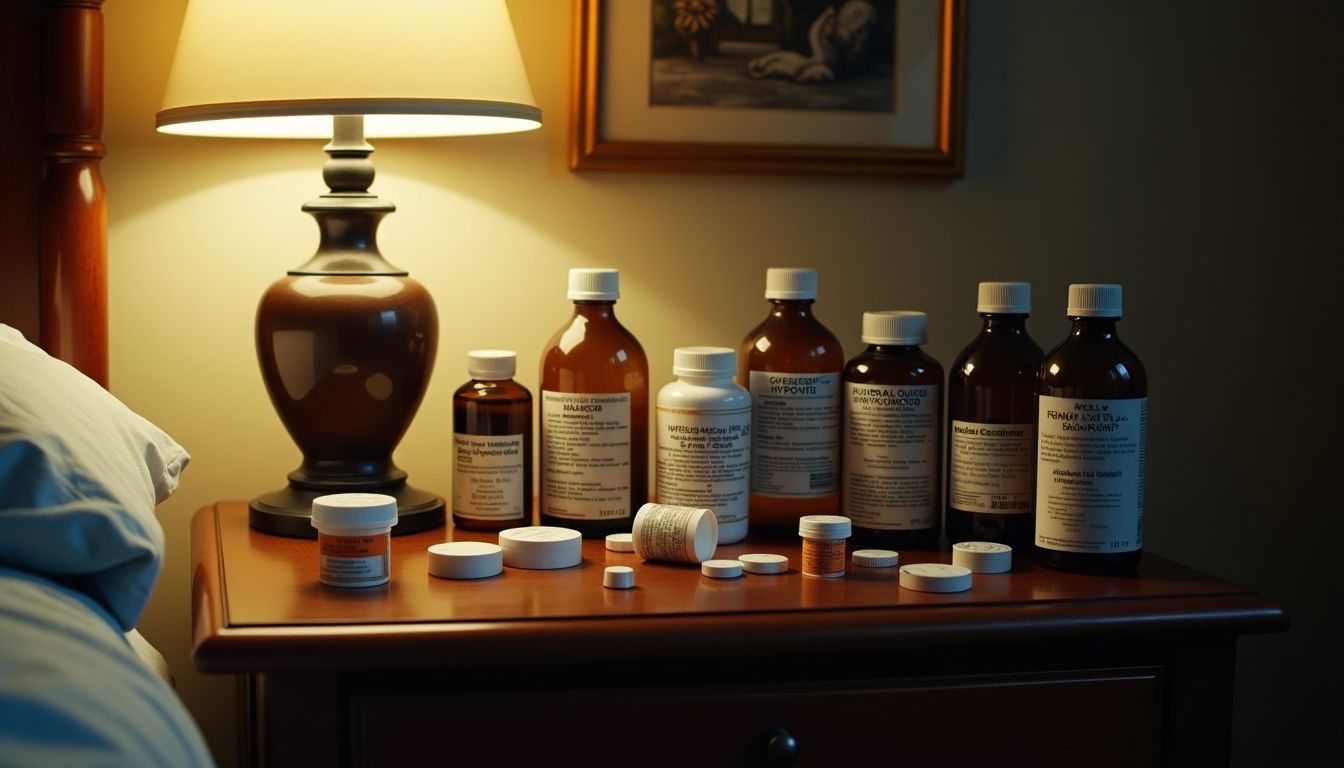
Hypnotics have evolved significantly throughout history. From the emergence of barbiturates to the introduction of benzodiazepines and nonbenzodiazepines, this evolution has shaped modern sleep aids.
Read more about how these advancements have taken place and impacted the field of sleep medicine.
Emergence of barbiturates
Barbiturates came into use in the early 20th century. They were a new kind of sleep aid. Doctors liked them because they worked well to make people sleep. But there was a big problem.
If someone took too much, it could kill them. Even ten doses were enough to be deadly.
People soon found out that these drugs had another risk. It was easy to get addicted to them. This made doctors and patients careful about using barbiturates for sleep troubles. Despite these risks, they played a key role in the history of sleep medicine for some time.
Development of quinazolinones
Scientists made quinazolinones to help people sleep. They are chemicals that work on the brain. This was a big step after the time of barbiturates. Quinazolinones were new and caused fewer problems for people who took them.
They worked by calming down nerve signals in the brain. This helped people fall asleep faster and stay asleep longer. After this, doctors started using benzodiazepines, another kind of sleep medicine.
Introduction of benzodiazepines
Leo Sternbach discovered benzodiazepines in the mid-1950s. This was a big step in sleep medicine. Before this, doctors used other drugs that were not as safe. In 1960, Librium hit the market as the first benzodiazepine.
It helped people relax and sleep better.
Benzodiazepines work on the GABA receptor in the brain. This makes them very good at calming down nerves and helping with sleep troubles. They quickly became popular for treating insomnia and anxiety due to their effectiveness and safety compared to older drugs.
Rise of nonbenzodiazepines
Nonbenzodiazepines, also called “Z drugs,” came into the market in Europe in 1988 and later in the U.S. by 1993 as a replacement for benzodiazepines. Zolpidem was one of the first nonbenzodiazepines introduced.
These medications were created to address concerns about addiction and dependency associated with traditional benzodiazepines while providing similar sleep-inducing effects. Nonbenzodiazepines gained popularity for their ability to improve sleep quality and reduce the time it takes to fall asleep without causing significant withdrawal symptoms.
Nonbenzodiazepines have been widely prescribed due to their effectiveness, producing fewer adverse effects than their predecessors, primarily offering short-term relief from insomnia while limiting long-term side effects.
Their introduction marked a significant shift in sleep medication, promoting safer alternatives that catered to the growing concern over substance abuse and dependency related to older sedatives such as benzodiazepines.
Modern Sleep Aids
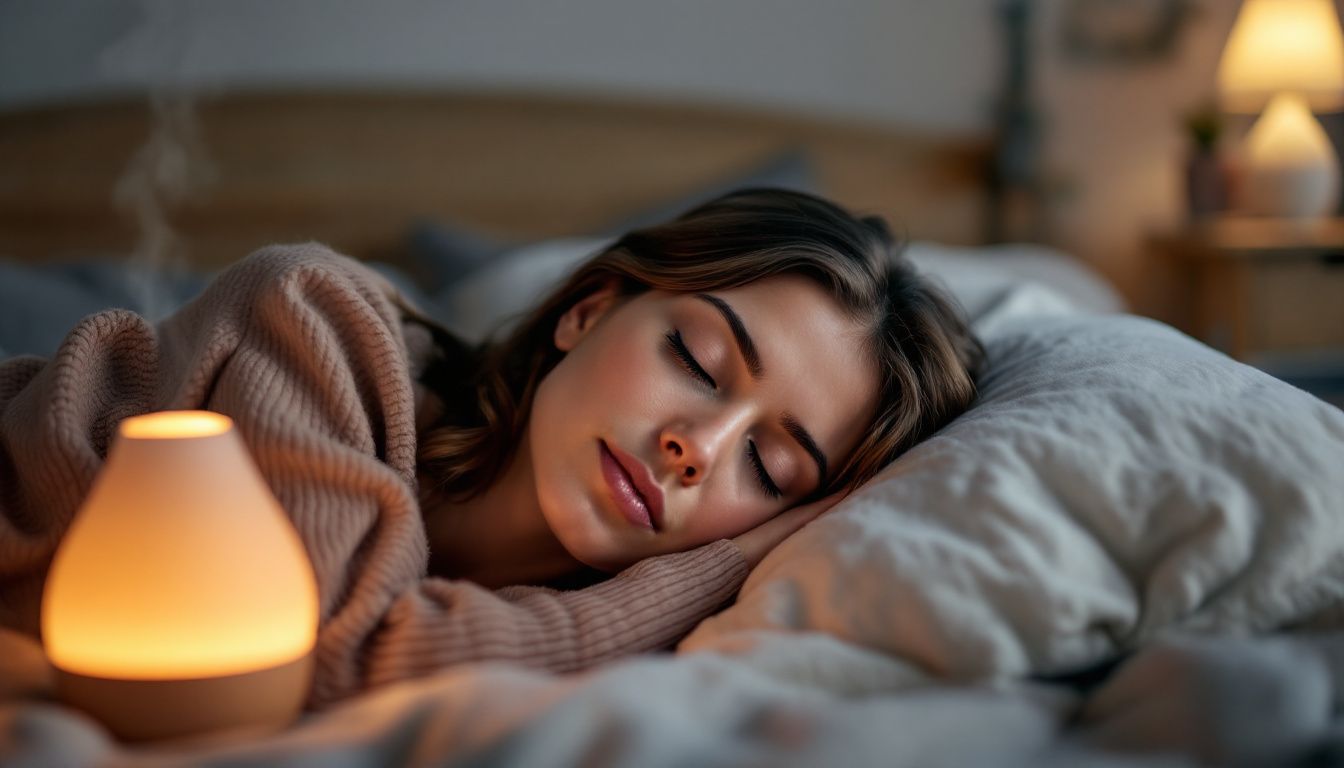
Modern sleep aids have evolved significantly. From melatonin and antihistamines to orexin receptor antagonists, various pharmacological advancements have revolutionized the way we address sleep issues.
Non-pharmacological approaches such as aromatherapy and improvements in sleep environments also play a crucial role in managing sleep disturbances.
Melatonin and melatonin receptor agonists
Melatonin, a natural hormone produced by the pineal gland, helps regulate sleep-wake cycles. It’s also available as a supplement and has gained popularity as a sleep aid in modern times.
Ramelteon, for instance, is a newer medication that works as a melatonin receptor agonist to help improve sleep. Melatonin receptor agonists like ramelteon target specific receptors in the brain that are involved in regulating the sleep-wake cycle.
This approach provides an alternative to traditional sleep medications, offering potential benefits for individuals struggling with insomnia or other sleep disorders.
Next up is “Antihistamines for Sleep”.
Antihistamines for sleep
Shifting from melatonin to antihistamines for sleep, let’s delve into the use of antihistamines as a remedy. Antihistamines such as diphenhydramine and doxylamine have sedative effects that assist in promoting sleep.
They function by inhibiting histamine receptors in the brain, resulting in drowsiness. Nevertheless, these medications can induce drowsiness the following day and are not advisable for extended use due to potential side effects like dry mouth and constipation.
As of late, there has been increasing interest in prescription-strength antihistamines like suvorexant, which target orexin receptors in the brain, supporting sleep without some of the adverse effects associated with conventional over-the-counter antihistamines.
Remember, while antihistamines may provide short-term relief for occasional insomnia, consulting a healthcare professional is crucial before integrating them into your nightly routine.
Orexin receptor antagonists
Orexin receptor antagonists, including suvorexant, are a new type of sleep medication that targets the brain’s orexin system. Suvorexant is approved for treating insomnia and works by blocking the action of orexin, a neurotransmitter involved in regulating wakefulness and sleep.
These medications help promote sleep by reducing alertness and promoting relaxation. They represent an innovative approach to managing sleep disorders, offering a different mechanism of action compared to traditional hypnotic drugs like benzodiazepines or nonbenzodiazepines.
The development of orexin receptor antagonists provides hope for individuals struggling with sleep issues by offering a novel option for managing their condition.
Other pharmacological advancements
Moving on from the use of orexin receptor antagonists, modern advancements in sleep aids have also seen the introduction of melatonin and melatonin receptor agonists. These drugs target the body’s natural sleep-wake cycle, aiding in treating various sleep disorders such as insomnia and circadian rhythm disorders.
In addition, antihistamines are being repurposed as sleep aids due to their sedative effects. Moreover, orexin receptor antagonists have emerged as a promising alternative for promoting wakefulness by blocking specific chemical signals in the brain that play a role in promoting wakefulness and alertness during the day.
These pharmacological advancements reflect a shift towards more targeted approaches to addressing sleep disturbances while minimizing adverse side effects commonly associated with traditional medications.
By integrating these new alternatives, individuals suffering from sleeping difficulties are presented with a wider range of choices to address their specific needs and conditions.
Non-Pharmacological Sleep Aids Through History
Ancient cultures had their own practices to promote sleep, such as using natural scents and maintaining a conducive sleeping environment. Some cultures also believed in the power of rituals and herbal remedies to help with sleep.
These historical non-pharmacological methods provide valuable insight into early human understanding of sleep and its importance.
Sleep hygiene practices in ancient cultures
In ancient cultures, people adhered to specific sleep hygiene practices. They utilized natural remedies and aromatherapy for better sleep. For instance, they engaged in mindfulness before bed to calm the mind.
Moreover, they crafted herbal treatments using plants like valerian root to aid in relaxation. These practices were geared towards creating a peaceful sleeping environment.
Now, let’s talk about the evolution of sleep aids…
Aromatherapy and natural remedies
Aromatherapy and natural remedies have a historical place in aiding sleep problems. Herbal treatments, such as those detailed in Culpeper’s herbal, were among the earliest sleep aids.
The use of essential oils like lavender or chamomile for relaxation has been documented across various cultures throughout history.
In addition to this, sage, valerian roots, and other plants have been used to promote sleep for centuries. These remedies often entail using plant extracts or inhaling their scents to induce calmness and aid relaxation before bedtime.
Incorporating these natural elements into sleep routines is a practice that dates back millennia.
Evolution of sleep environments and bedding
Sleep environments and bedding have evolved over time to enhance sleep quality. In ancient cultures, people utilized natural materials like leaves and animal fur for sleeping. As societies progressed, the use of cushions, pillows, and eventually mattresses became more prevalent.
Moreover, innovations in bedding materials such as cotton and wool improved comfort and warmth during sleep. Modern advancements have introduced memory foam mattresses tailored to promote better spinal alignment and distribute body weight evenly.
Additionally, the understanding of the impact of lighting has led to the development of blackout curtains that help regulate light exposure for improved sleep. The integration of technology into bedding has also brought adjustable firmness settings for mattresses, temperature-regulating sheets, and smart pillows tailored to track sleep patterns.
These developments illustrate an ongoing effort to refine the sleeping environment for more restful sleep.
Historical Sleep Disorders and Their Treatments
Early attempts to manage insomnia and other sleep disorders date back centuries, with various cultures devising remedies and rituals. This included efforts to tackle hypersomnias such as African sleeping sickness, interpreting parasomnias like night terrors, and seeking treatments for movement disorders.
These historical instances offer valuable insights for understanding the development of sleep medicine through time.
Insomnia and early attempts to manage it
Early historical texts, such as those by Hippocrates, Galen, and Al Razi, documented the existence of insomnia. There were various remedies suggested to manage it in these texts.
Hypersomnias like African sleeping sickness
African sleeping sickness, also known as African trypanosomiasis, is a historical example of hypersomnia. It is caused by the parasite Trypanosoma brucei and transmitted through the tsetse fly.
The disease progresses in two stages – an initial stage characterized by fever, headaches, joint pains, and itching; followed by the second stage where it invades the central nervous system leading to disruptions in sleep patterns including daytime drowsiness and nighttime insomnia.
Without treatment, African sleeping sickness can be fatal.
Heinrich Bruno Schindler’s publication on hypersomnolence in 1829 sheds light on our early understanding of conditions such as African sleeping sickness and how they affect sleep patterns.
Parasomnias and historical interpretations
Transitioning from the historical interpretations of African sleeping sickness, it’s worth noting that sleepwalking and night terrors were historically associated with NREM sleep. Moreover, phenomena like incubus have been reclassified as conditions such as sleep paralysis and nightmare disorder.
Movement disorders and their remedies
As we explore movement disorders and their remedies, it’s crucial to note that restless legs syndrome (RLS) was first described by Thomas Willis in 1684. Karl-Axel Ekbom fully outlined RLS in 1945.
It’s an important fact as we delve into understanding historical treatments and identifying advancements that have been made for addressing movement disorders like RLS over the centuries.
This gives us a perspective on how far medical science has come in treating these conditions, shedding light on the development of remedies that are used today.
In understanding the remedies for movement disorders, let’s look at opium and white poppy use in ancient civilizations as potential examples of early attempts to address such concerns.
The study of these ancient practices provides valuable insight into the historical evolution of remedies for movement disorders, offering a context for appreciating modern approaches to dealing with these conditions.
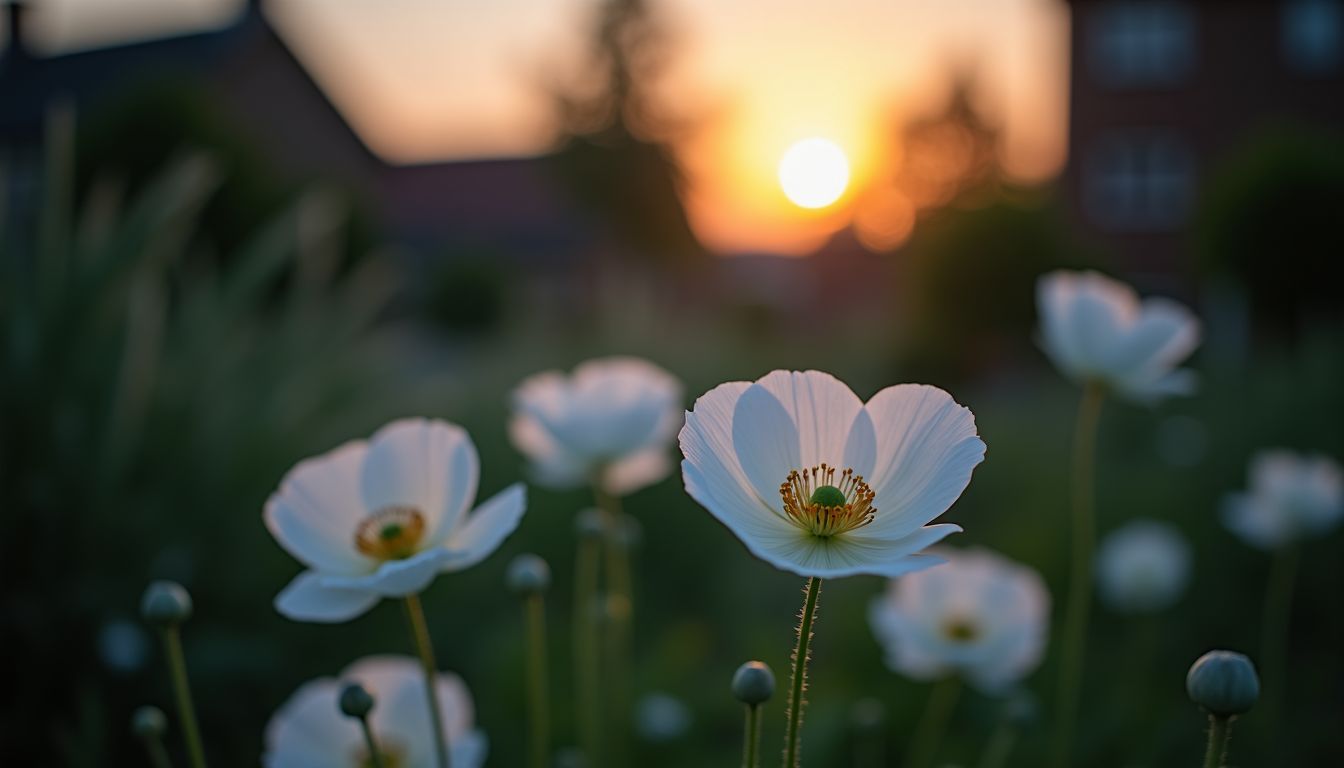
Cultural Perspectives on Sleep Aids
Different regions have diverse views on sleep aids. Sleep aid usage varies across cultures.
Sleep aid usage in different regions
Sleep aid usage varied across regions in history. Different cultures had unique sleep-inducing rituals and remedies. Ancient civilizations, like the Greeks and Egyptians, used herbal treatments to promote sleep.
Meanwhile, Chinese medicine focused on acupuncture and herbs for calming effects. In India, Ayurveda emphasized specific yoga poses and breathing exercises for better sleep quality.
Across the Middle East, aromatherapy using lavender and chamomile was common practice for promoting restful sleep. European traditions often included bedtime teas made from various herbs such as valerian root or passionflower.
In addition to these traditional methods, cultures also relied on environmental factors to aid in sleeping — like creating cooler environments at night or adjusting daily schedules based on natural light cycles.
These historical practices laid the foundation for modern-day holistic approaches to sleep aids that prioritize both physical and environmental influences.
Historical stigma around sleep medications
Sleep medications have faced stigma throughout history. Concerns about addiction and dependency led to this stigma. Many people viewed sleep aids with suspicion due to these concerns.
This stigma has been an enduring aspect of the history of sleep aids.
Nonetheless, perspectives on sleep medications evolved over time as new scientific advancements were made in the field of sleeping remedies. The next topic will delve into cultural perspectives on sleep aids.
Religious and spiritual views on sleep remedies
Religious and spiritual beliefs shaped the use of sleep remedies throughout history. Early cultures linked their sleep-inducing rituals to spiritual practices, believing in the power of certain herbs and rituals to bring about restful slumber.
These views influenced the development of ancient sleep aids, reflecting a deep connection between spirituality and the pursuit of peaceful sleep.
Throughout history, religious and spiritual perspectives have played a significant role in shaping people’s beliefs about how to achieve restful sleep. These views have had a tangible impact on the types of remedies used by different communities across various civilizations.
Scientific Advancements in Sleep Medicine
Scientific advancements in sleep medicine have transformed our comprehension of sleep patterns. From the unveiling of circadian rhythms to the introduction of modern sleep studies, these progressions offer vital insights into the intricacies of sleep physiology.
Introduction of sleep studies
In 1863, Kohlschtter carried out important sleep depth experiments. Then in 1979, the Association of Sleep Disorders Centers issued a critical classification of sleep disorders. These pivotal events have greatly influenced our comprehension of sleep and established the basis for modern sleep studies.
Immersing ourselves in this field, we will reveal significant scientific progress and its influence on how we understand and address sleep patterns.
Progressing to “Early History of Sleep Aids,” let’s investigate ancient remedies and herbal treatments that contributed to promoting healthy sleeping habits.
Understanding circadian rhythms
The suprachiasmatic nucleus (SCN) plays a crucial role in regulating our body’s internal clock. This small region in the brain was identified as a circadian timing regulator back in 1978.
It helps synchronize our biological rhythms with the 24-hour day-night cycle, which affects various functions such as sleep-wake patterns, hormone release, and body temperature.
The two-process model of sleep regulation is significant because it integrates both circadian and homeostatic systems. The interactions between these two processes determine when we feel alert during the day and when we start feeling sleepy at night.
This model provides valuable insights into how our bodies naturally regulate sleep, demonstrating how complex and intricate this system truly is.
Role of sleep research in developing sleep aids
Sleep research has been crucial in developing modern sleep aids. Understanding of REM sleep, which was discovered, changed the way we view sleep. Publications related to sleep research increased significantly between 1500 and 1999.
This growth shows how much we have learned about sleep and developed new remedies over time.
This knowledge helps scientists develop better medications for various sleep disorders like insomnia and apnea. Sleep studies are key in unraveling secrets around our biological clocks as well as the regulation of our sleeping patterns.
These findings contribute to the progress made in creating effective non-pharmacological sleep aids such as cognitive behavior therapy and natural remedies, alongside pharmaceutical advancements including melatonin receptor agonists and orexin receptor antagonists.
Risks and Controversies in Sleep Aid History
Many sleep aids can lead to addiction and dependency. To learn more about the risks of using these medications, keep reading.
Addiction and dependency concerns
Opiates cause “morphine insomnia.” Around 50% of dependent users try to improve sleep, even though it doesn’t work. Dependency concerns caused a drop in benzodiazepine prescriptions.
Side effects of early sleep aids
Early sleep aids such as laudanum and barbiturates had serious side effects. Barbiturates, for example, led to issues like tolerance, dependence, and withdrawal symptoms in users. Chronic alcohol consumption also resulted in poor sleep quality even up to two years after stopping.
These historical substances carried risks that often outweighed their benefits.
Moving on to “The Evolution of Hypnotics”…
Ethical debates in sleep medicine
Ethical discussions in sleep medicine involve concerns about addiction and reliance. The Wellcome Trust funded research to emphasize these issues, particularly regarding the safety and effectiveness of historical sleep aids.
The use of certain medications over extended periods can lead to reliance, which raises ethical questions about prescribing them for insomnia or other sleep disorders.
These discussions also revolve around the potential risks versus benefits of long-term use. Healthcare providers and researchers must carefully navigate these intricacies when considering the ethical implications of using pharmacological interventions for sleep disturbances.
In particular, understanding how medication may affect individuals differently is crucial in addressing the ethical concerns surrounding addictive or habit-forming substances used in the treatment of sleep disorders.
Timeline of Key Sleep Aid Developments
The timeline of sleep aid developments dates back to ancient remedies and herbal treatments. From the use of opium in early civilizations to the emergence of modern pharmaceuticals, the evolution of sleep aids has been a journey marked by scientific advancements and cultural perspectives.
Ancient remedies to modern pharmaceuticals
In ancient times, people used opium and white poppy for sleep. They also followed rituals to induce sleep. In the 16th century, they had a poppy-based syrup called diacodium. Now, modern pharmaceuticals like ramelteon and suvorexant help with sleep.
The timeline shows how remedies changed over time. Next is “Sleep Aids in the Middle Ages”.
Major milestones in sleep aid research
From ancient remedies to modern pharmaceuticals, the journey of sleep aid research has been marked by significant milestones. In 1863, Kohlschtter conducted experiments on sleep depth, paving the way for understanding sleep mechanisms.
Moreover, in 1979, the Association of Sleep Disorders Centers published a classification of sleep disorders, revolutionizing the diagnosis and treatment of various sleep-related conditions.
These milestones have propelled advancements in understanding and addressing sleep disorders.
Conclusion
Throughout history, people have sought ways to improve sleep. From ancient remedies and herbal treatments to modern pharmaceutical advancements, the quest for better slumber has been ongoing.
The evolution of sleep aids reflects a blend of cultural practices and scientific progress. As our understanding grows, new non-pharmacological methods emerge alongside innovative medications.
When exploring this domain, it is evident that both tradition and modern science shape the ever-evolving world of sleep medicine.

